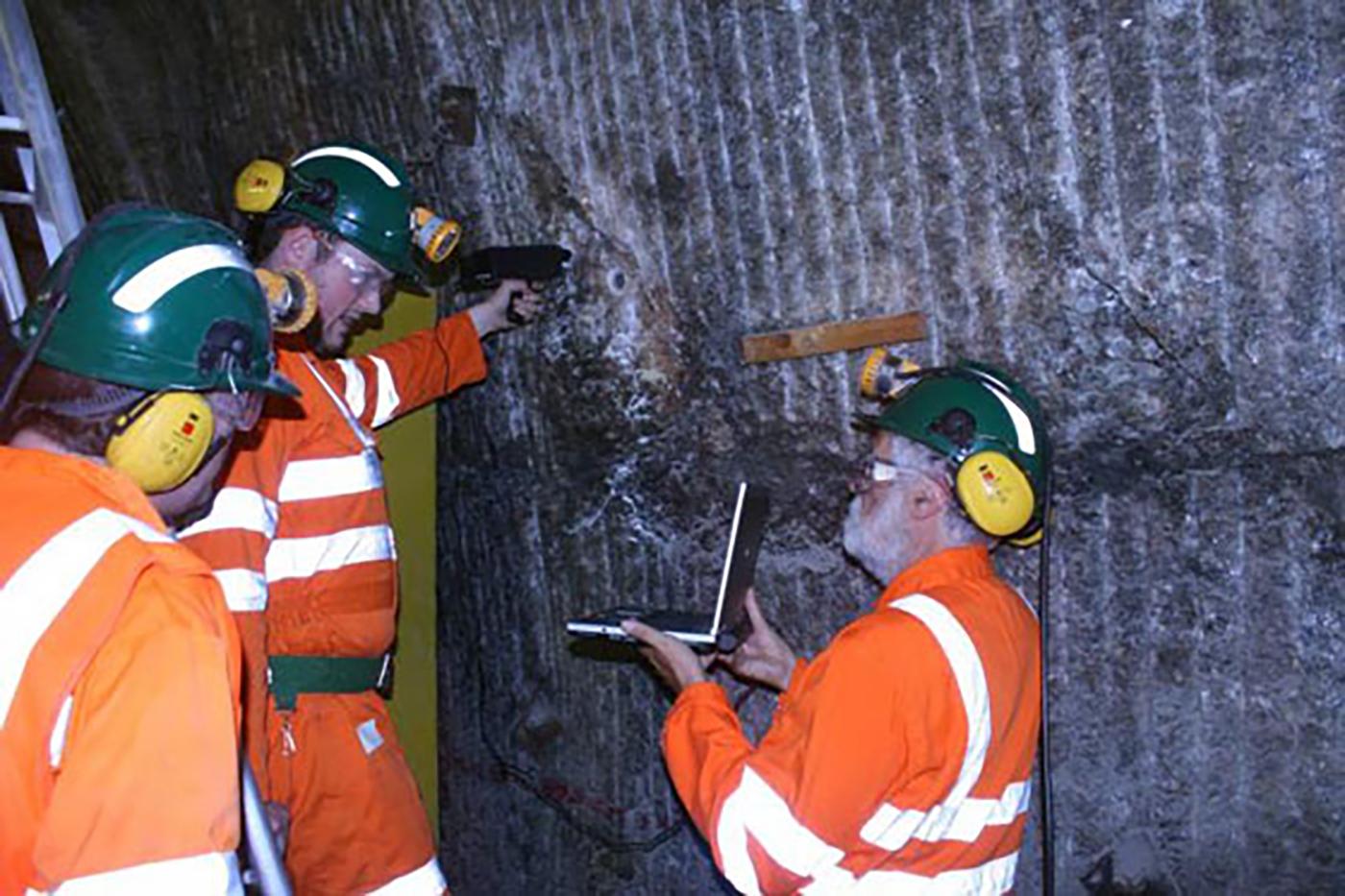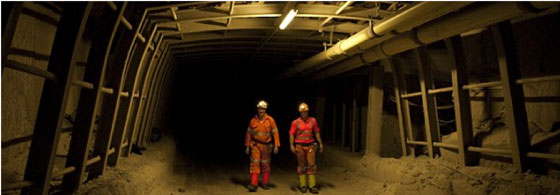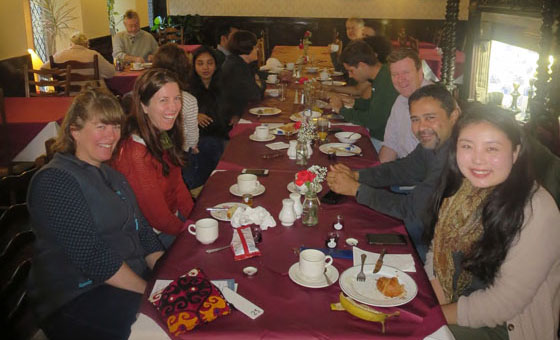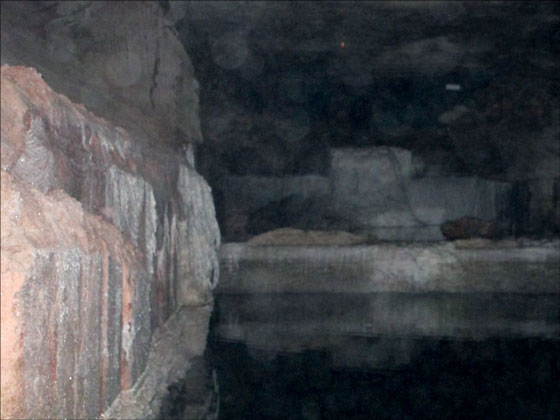An international team of scientists, teachers, engineers, biologists, geologists, and astronauts address astrobiology questions in an expedition to Boulby Mine in the United Kingdom.

For two weeks in October, from the 8th-20th, SETI Institute scientist Rosalba Bonaccorsi will be part of the expedition team when NASA Spaceward Bound and the U.K. Centre for Astrobiology conduct a planetary analog expedition in the Boulby Mine. Boulby is the site of the astrobiology analog research with the Mine Analog Research Program (MINAR)

The Boulby International Subsurface Astrobiology Laboratory (BISAL) is hosted by the Boulby Mine complex north of Whitby, Yorkshire, on the North East coast of England (UK). The Boulby Mine is a 1.1 km-deep active potash mine at the core of a 250-million-year-old, massive sequence of NaCl, KCl, and sulfates salts. The salts were formed by the evaporation of an ancient ocean - the Zechstein Sea -- which covered most of present day Western Europe during the Permian geologic period. The facility comprises over 1,000 km of underground roadways through the salt deposits. BISAL is a fully air conditioned, internet connected to the surface (100 Mbps) laboratory, with an outside ‘Mars yard’ for testing rover and instrument technology. The facility is also used for studies of astrophysics - the Underground Laboratories for Dark Matter Research, and low-background radiation and other deep underground science.
The expedition is made up of an international team of scientists, teachers, engineers, biologists, geologists and astronauts. Scientists and educators from NASA and the SETI Institute will work on a variety of science and technology projects which will address some specific scientific questions and test a variety of potential technologies and planetary exploration protocols in the mine:
Scientific Questions:
- Does ancient salt preserve viable organisms?
- What biosignatures of life are preserved in deep salts?
- What types of organisms inhabit deep brines?
- What are the environmental conditions that support life in salt?
- What is the composition and structure of evaporite deposits?
- Where does the deep subsurface gas come from? Is this from biology or from geology?
- How we can apply what we learn in MINAR5 to the search for past and present life on other planets?
Testing:
- Life detection technology
- Clean sampling technologies
- Autonomous drones and rover technology for deep subsurface exploration and mapping on the Moon and Mars
- Gas detection technology
- Communication protocols with the surface to simulate cave and lava tube exploration on the Moon and Mars

The Boulby Mine is the site of this particular research because these ancient evaporite deposits can preserve traces of ancient life - even host current microbial life -- and have parallels to the chloride-bearing deposits that have been observed on Mars. Therefore, these salt deposits are important test beds to investigate any past or present signs of life buried inside salt crystals on another planet.

The team will explore and study a variety of ancient salt structures and briny environments. The primary objectives are to detect evidence of ancient and modern life inside the salt and to monitor the associated underground microclimate (temperature and rH). They will scout Boulby’s underworld, and test for the most efficient protocols for accepting sampling as well as in situ and laboratory analysis of collected samples. Furthermore, they will conduct technology/robotic experiments to simulate drilling missions in space conducted by Astronauts.

Spaceward Bound is an educational program and will use the lab and mine environment to carry out science and technology in support of the subsurface exploration of the Moon and Mars, and Ocean Worlds. Exploration, hand-on activities and classroom work will be conducted during the day. A typical day will involve a 101 introductory lectures-lab, safety training sessions, and morning/evening group meetings to plan together the next day science objectives and tasks, as well as discuss on what we have learned during the day.
Rosalba has worked as an Astrobiologist at the Carl Sagan Center of the SETI Institute since 2008 and with scientists at NASA Ames Research Center since 2005. She enjoys doing science to advance our understanding of the universe and spends much of her spare time raising public awareness about planetary analog research taking place on Earth, including associated space missions to the Solar System (such as the Mars Science Lab 2020) and those planned to reach potential life in ocean worlds (e.g., Saturn's icy moon Enceladus). Rosalba’s goal is to gain a broad picture of where life and its signatures are most successfully distributed, concentrated, preserved, and detected. This knowledge helps us to understand how to search for life beyond Earth.
The SETI Institute is proud to collaborate and support the NASA Spaceward Bound Expedition to Boulby Mine, this October.





